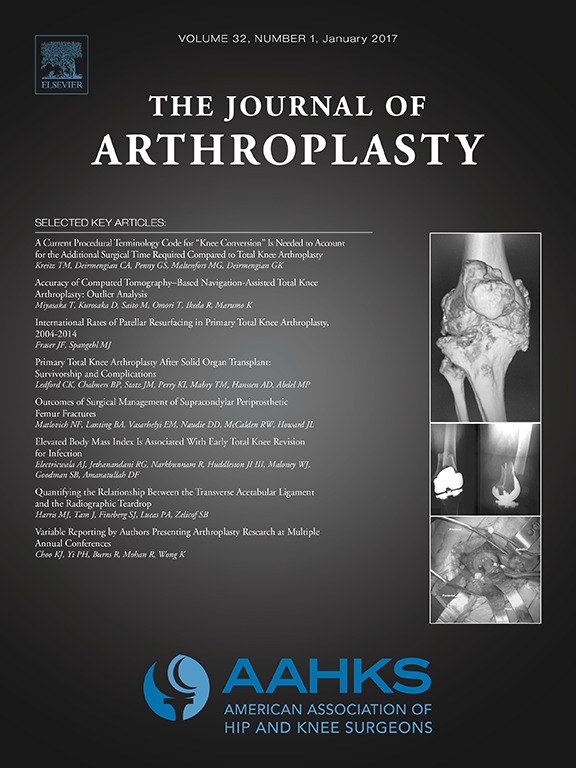
No significant difference in clinical or radiographic outcomes, but patients prefer KA TKA over MA .
This study has been identified as potentially high impact.
OE's AI-driven High Impact metric estimates the influence a paper is likely to have by integrating signals from both the journal in which it is published and the scientific content of the article itself.
Developed using state-of-the-art natural language processing, the OE High Impact model more accurately predicts a study's future citation performance than journal impact factor alone.
This enables earlier recognition of clinically meaningful research and helps readers focus on articles most likely to shape future practice.
Computer-Assisted Kinematic and Mechanical Axis Total Knee Arthroplasty: A Prospective Randomized Controlled Trial of Bilateral Simultaneous Surgery.
The Journal of arthroplasty.2020;35(2):443-450The debate between kinematic versus mechanical alignment total knee arthroplasty (TKA) has been ongoing, with no clear favourite. Kinematic alignment (KA) relies on attempting to restore patient anatomy, with a "personalized" approach to TKA, often relying on computer navigation, with or without other supplemental technologies such as three-dimensional printing. Mechanical alignment, on the other hand, relies on a standardized, reproducible technique, with soft tissue balancing to compensate for individual patient anatomy as required. In this study, the authors randomized 45 patients undergoing bilateral TKA to receive a KA knee on one side and an MA knee on the other. The more symptomatic knee was randomized to KA or MA, with the other knee being assigned the alternative. At two year follow-up, there were no significant differences in terms of Forgotten Joint Score, KOOS scores, Oxford Knee Scores, or range of motion. There were also no significant differences in terms of component position. When asked which knee they preferred, about half of patients had no preference. Overall, this study does not support the use of either technique, though given the simplicity and fewer resources generally required for MA TKA, this may be preferred.
Unlock the Full ACE Report
You have access to 4 more FREE articles this month.
Click below to unlock and view this ACE Reports
Unlock Now
Critical appraisals of the latest, high-impact randomized controlled trials and systematic reviews in orthopaedics
Access to OrthoEvidence podcast content, including collaborations with the Journal of Bone and Joint Surgery, interviews with internationally recognized surgeons, and roundtable discussions on orthopaedic news and topics
Subscription to The Pulse, a twice-weekly evidence-based newsletter designed to help you make better clinical decisions
Exclusive access to original content articles, including in-house systematic reviews, and articles on health research methods and hot orthopaedic topics
































































